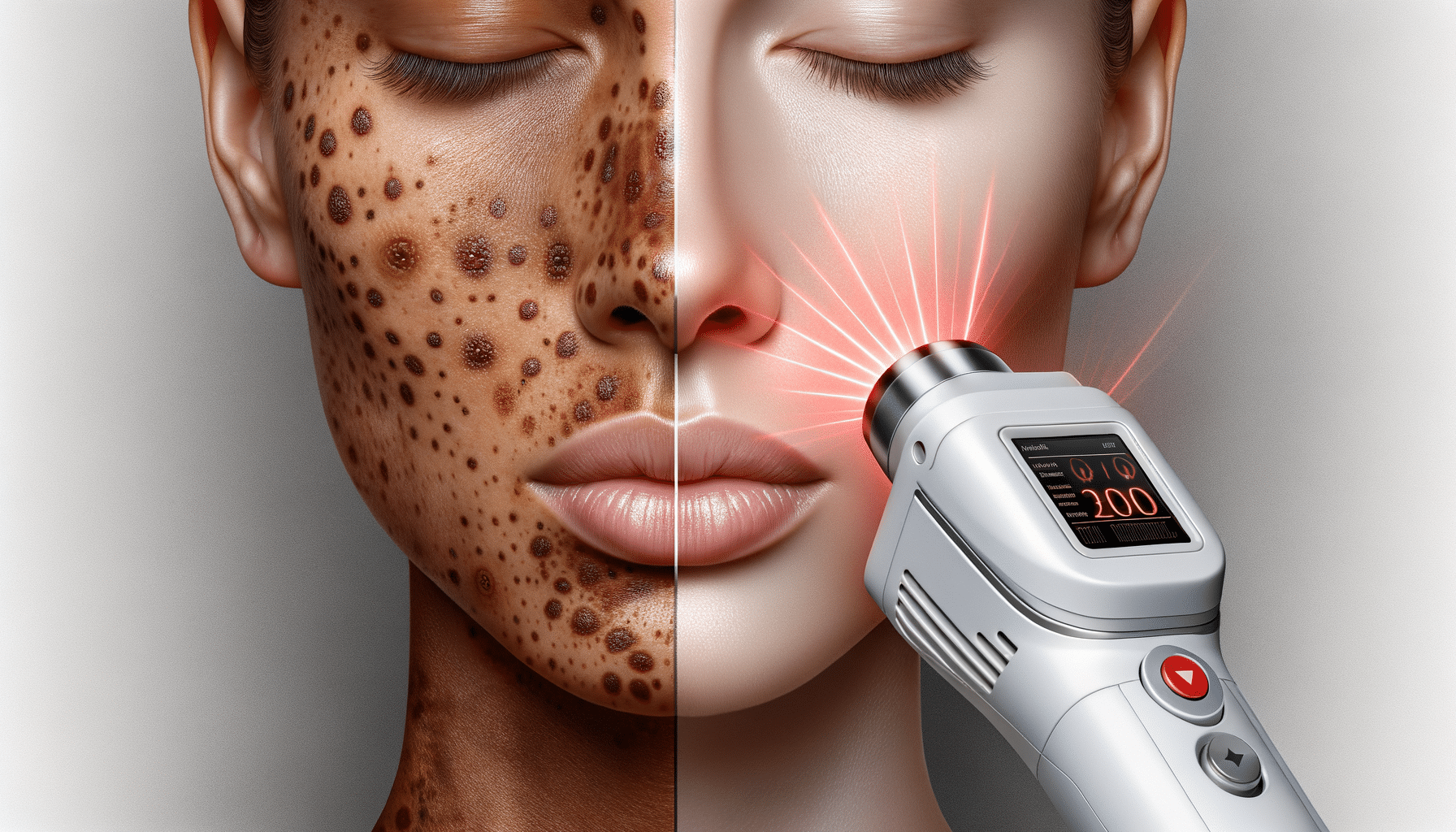
Understanding Hyperpigmentation and Its Causes
Hyperpigmentation is a common skin condition characterized by darkened areas on the skin. It occurs when an excess of melanin, the brown pigment that produces normal skin color, forms deposits in the skin. While hyperpigmentation is not typically harmful, it can be a cosmetic concern for many individuals. There are several types of hyperpigmentation, including melasma, sunspots, and post-inflammatory hyperpigmentation. Each type has different causes, such as sun exposure, hormonal changes, or skin injuries.
One of the primary causes of hyperpigmentation is prolonged exposure to the sun. Ultraviolet (UV) rays can accelerate the production of melanin, leading to sunspots or age spots. Hormonal changes, particularly during pregnancy or with the use of birth control pills, can cause melasma, often referred to as the “mask of pregnancy.” Additionally, skin injuries like cuts, burns, or acne can result in post-inflammatory hyperpigmentation as the skin heals.
Understanding the root cause of hyperpigmentation is essential for determining the most effective treatment approach. While topical treatments and skincare routines can help manage hyperpigmentation, laser treatment has emerged as a powerful option for those seeking more significant results.
How Laser Treatment Works
Laser treatment for hyperpigmentation involves using concentrated light beams to target and break down the excess melanin in the skin. The laser emits a specific wavelength of light that is absorbed by the pigmented areas, effectively shattering the melanin particles. Over time, the body’s natural healing processes remove the fragmented pigment, leading to a more even skin tone.
There are different types of lasers used in the treatment of hyperpigmentation, each with its own advantages. Some of the most commonly used lasers include:
- Q-switched lasers: These lasers deliver high-intensity light pulses in short bursts, making them effective for treating various pigmentary issues.
- Fractional lasers: These create micro-injuries in the skin, promoting collagen production and skin renewal while targeting pigmentation.
- Pulsed dye lasers: These are often used for vascular lesions but can also address certain types of pigmentation.
The choice of laser depends on factors such as the type and severity of hyperpigmentation, skin type, and the individual’s overall health. Consulting with a qualified dermatologist or skincare professional is crucial to determine the most suitable laser treatment.
Benefits and Effectiveness of Laser Treatment
Laser treatment offers several benefits for individuals struggling with hyperpigmentation. One of the primary advantages is its ability to deliver more precise and targeted results compared to topical treatments. This precision ensures that only the affected areas are treated, minimizing damage to surrounding skin.
Moreover, laser treatment can address various types of hyperpigmentation, including stubborn cases that have not responded well to other treatments. The procedure is generally quick, with sessions lasting anywhere from a few minutes to an hour, depending on the size of the treatment area.
Many individuals notice a significant improvement in their skin tone and texture after just a few sessions. However, the number of treatments required can vary based on the severity of the pigmentation and the type of laser used. For some, maintenance sessions may be necessary to sustain the results.
Overall, laser treatment is highly rated for its efficacy in reducing hyperpigmentation and enhancing skin appearance. Yet, as with any medical treatment, results can vary, and not all cases of hyperpigmentation may respond to laser therapy.
Potential Risks and Considerations
While laser treatment for hyperpigmentation is generally safe, it is not without potential risks and side effects. Some individuals may experience temporary redness, swelling, or discomfort in the treated area. These side effects typically subside within a few days.
In rare cases, laser treatment can lead to more serious complications, such as scarring, changes in skin texture, or worsening of pigmentation. These risks are often higher in individuals with darker skin tones, as their skin contains more melanin, which can absorb more laser energy.
To minimize the risk of adverse effects, it is crucial to seek treatment from a qualified and experienced professional. A thorough consultation before the procedure can help identify any potential contraindications and set realistic expectations for the outcome.
Additionally, proper aftercare is essential to ensure optimal results and reduce the likelihood of complications. This includes avoiding sun exposure, using sunscreen, and following any specific post-treatment instructions provided by the practitioner.
Conclusion: Is Laser Treatment Right for You?
Deciding whether laser treatment for hyperpigmentation is the right choice depends on various factors, including the type and severity of your pigmentation, your skin type, and your personal preferences. While laser treatment offers promising results for many, it is not a one-size-fits-all solution.
Consulting with a dermatologist or skincare professional can provide valuable insights and help determine the most appropriate treatment plan tailored to your needs. They can assess your skin condition, discuss potential risks, and guide you through the process to achieve the desired results.
Ultimately, laser treatment is among the top options for addressing hyperpigmentation, offering a blend of precision, effectiveness, and convenience for those seeking a clearer, more even complexion.